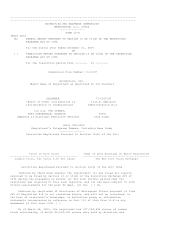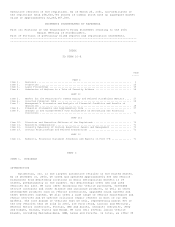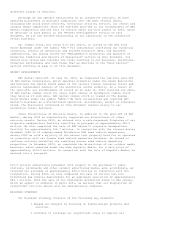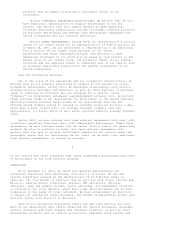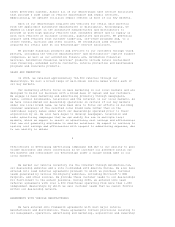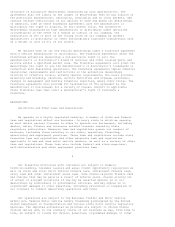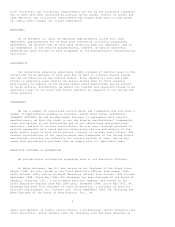AutoNation 2000 Annual Report Download - page 5
Download and view the complete annual report
Please find page 5 of the 2000 AutoNation annual report below. You can navigate through the pages in the report by either clicking on the pages listed below, or by using the keyword search tool below to find specific information within the annual report. other dealerships with respect to finance and insurance operations, (2)
ensure a high level of compliance with our standard finance and
insurance operating practices, such as the use of our customer-friendly
"full-disclosure" finance and insurance menu, (3) increase sales at our
dealerships of finance and insurance products offered by our automotive
finance arm, AutoNation Financial Services, and (4) promote further
consolidation of the retail finance sources for our customers' vehicle
purchases to drive improved pricing and efficiency.
Improve Our Operating Efficiency
We plan to leverage our status as the largest automotive retailer in the
United States to further improve our cost structure and the utilization of our
assets. During 1999 and 2000, in order to improve our cost structure we shut
down our cost-intensive used vehicle megastore business and reduced our staff
by approximately 2,000 employees, of whom approximately 200 were corporate
headquarters staff. These and other cost-reduction initiatives have resulted in
cost savings and improved operating margins for us. However, we believe that we
still have important opportunities to improve our cost structure and the
utilization of our assets. We plan to focus on the following key methods to
achieve these goals:
(arrow) REDUCE DAYS SUPPLY OF NEW AND USED VEHICLES: We are focused
on managing our new and used vehicle inventories to decrease the days
supply of vehicles that we have at any given time at our dealerships,
with the objective of reducing our inventory financing interest expense
and carrying costs. We plan to achieve this by: (1) developing and
using a web-based tracking system that enables us to more closely
monitor our inventories, (2) establishing days supply targets for each
of our vehicle models, (3) managing our new and used vehicle
inventories across the dealerships within each of our markets to
optimize inventory turnover and (4) focusing our inventory purchasing
on the more popular model packages.
(arrow) DECREASE TIME TO CONVERT RECEIVABLES INTO CASH: We intend to
focus on decreasing the amount of time that our dealerships take to
receive payment on retail receivables (or "contracts-in-transit"). We
plan to accomplish this goal, in part, by (1) adopting "best practices"
concerning sales and contracts-in-transit flow processing, (2)
developing and using a web-based tool to monitor our dealerships'
contracts-in-transit and (3) developing relationships with preferred
lenders who can expeditiously process our dealerships'
contracts-in-transit. By more quickly converting our
contracts-in-transit into cash, we expect to be able to more
3
quickly use our capital to pursue our strategic initiatives, including
those described below under the "Effectively Use Free Cash Flow"
heading.
Effectively Use Free Cash Flow
A key component of our strategy is to maximize the return on investment
generated by the use of the free cash flow that our business generates. We
expect to use our free cash flow to make capital investments in our current
businesses, to complete strategic dealership acquisitions in our key markets
and to repurchase shares of our common stock pursuant to our Board-authorized
share repurchase program. The considerations in determining how we will
allocate our free cash flow among such uses include the following:
(arrow) CAPITAL INVESTMENTS: During 2000, we invested $148.2 million
on capital investments, including to upgrade and improve certain of our
dealership facilities. We expect to make additional facility and
infrastructure upgrades and improvements from time to time, such as the
construction of new vehicle dealership facilities, with a focus on

